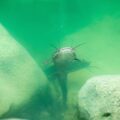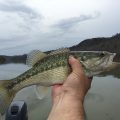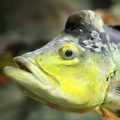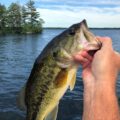Some species of bass eat snakes, but it’s not a regular part of their diet. Bass have a large and varied diet and could be more picky. Bass are opportunistic predators, so they have a wide and varied diet. It’s no surprise that there have been multiple recorded instances where it has been seen that bass does consume snakes.
But this diet is only universal across some species of bass. The primary diet of bass usually consists of fish, crustaceans, insects, and other aquatic organisms. The bass species known to prey on snakes occasionally are largemouth bass (Micropterus salmoides) and smallmouth bass (Micropterus dolomieu).
When a bass encounters a snake in the water, it will evaluate it as potential prey and see if the snake is within a suitable size range. It also has to present an opportunity for capture.
Younger snakes or smaller species that venture into the water are more likely to be targeted by bass—for example, water snakes or garter snakes. Larger snakes, such as adult water moccasins or other species, are less likely to be pursued by bass. This is because most of them are poisonous and pose a high risk.
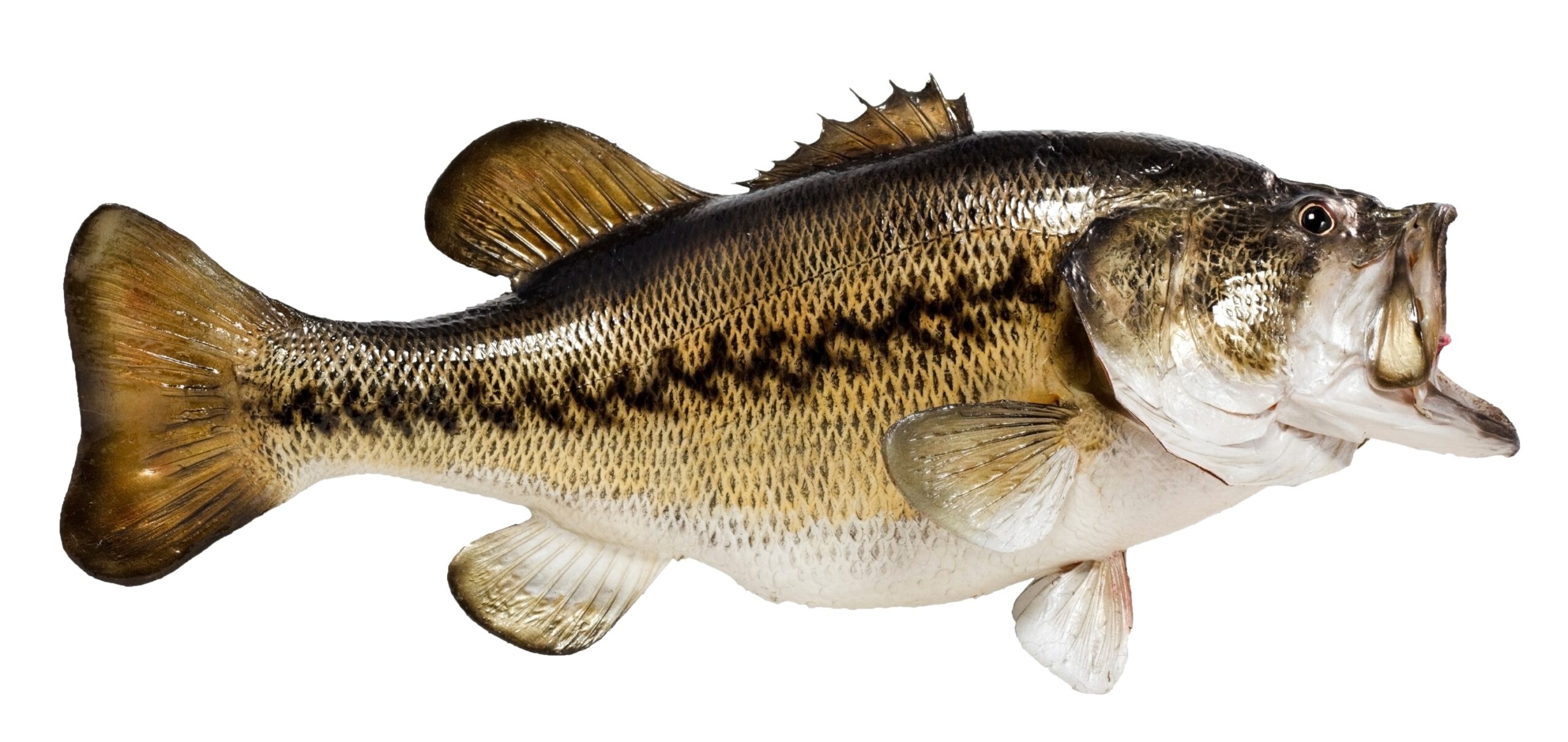
How do bass eat snakes?
Bass eats snakes by employing their usual ambush-style hunting strategy. Bass have a specialized mouth structure, which helps them with this feeding strategy. They have a protrusible mouth that allows them to engulf relatively large prey.
When hunting, they typically lie in wait, hiding among aquatic vegetation or structures, and swiftly strike at their prey when it comes within adequate distance. Once the bass captures the snake, its sharp teeth will secure the catch and swallow it whole.
Can snakes be used as bait for bass?
Using snakes as bait in fishing is more about just because you can doesn’t mean you should.While snakes may have been used as bait for bass fishing in the past, it is not at all a widespread or recommended practice today. Using snakes as bait for catching bass is rare in recreational fishing. It may even be illegal in many places due to conservation concerns for both the snake species and the bass. However, in the past, some anglers have experimented with using snakes as bait, especially in regions where they are more abundant. If you consider using snakes as bait, it is essential to prioritize ethical and environmental factors. Naturally, only non-venomous snake species should ever be considered for this purpose.
Garter snakes (Thamnophis spp.) and water snakes (Nerodia spp.) are examples of non-venomous snakes that can be used as potential bait for bass. They are abundant, and some species of bass feed on them. These snakes are more commonly found in and around water, making them more accessible to anglers.
To use snakes as bait, the angler would need to rig the snake onto the fishing hook with care. The most common method involves inserting the hook through the snake’s body in such a way that it can maintain its natural swimming motion. This presentation aims to mimic a live snake, which would, in turn, attract the curiosity and predatory instincts of bass.
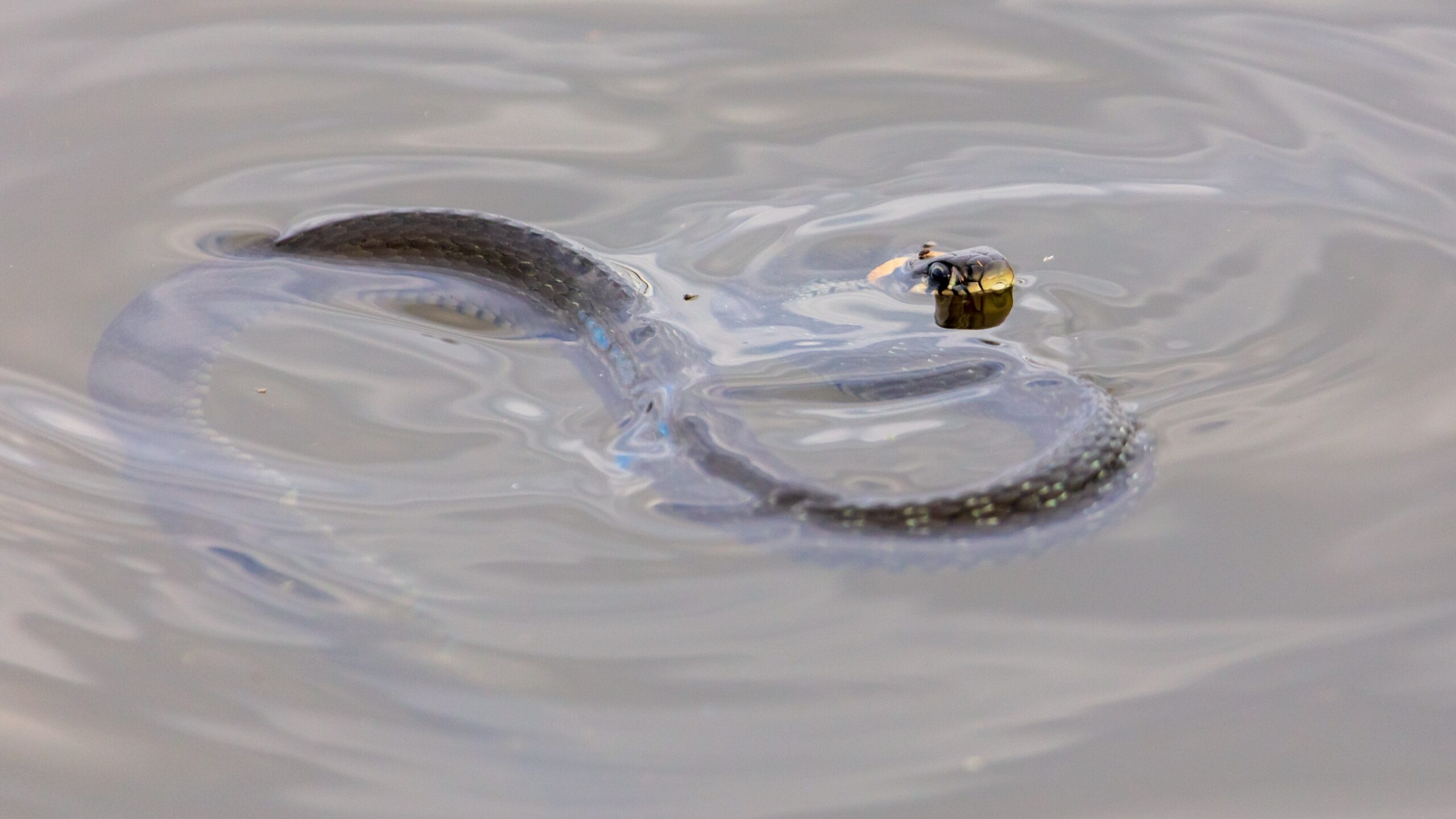
What are the best baits for bass?
When it comes to catching bass, there are various baits and lures that you can work with. Certain baits work better in certain situations and conditions. Here are some of the best baits for catching bass:
Plastic Worms
Versatile and widely used, plastic worms come in various sizes and colors and mimic natural prey. They work well for bass in diverse water conditions. Plus, they are readily available at affordable prices.
Crankbaits
These hard-bodied lures imitate injured fish by creating vibrations, which attract bass. They are excellent for efficiently covering a large area and are suitable for shallow and deep waters.
Jigs
Jigs are effective in heavy cover areas, like weeds and rocks. These are spots where bass hide. They have a lead or tungsten head and a skirt. You can add trailers like plastic crawls or some creatures to enhance their appeal.
Spinnerbaits
Spinnerbaits have spinning metal blades that produce flashes and vibrations. This helps in drawing the attention of the bass. They work well in murky waters and around different structures.
Topwater Lures
These lures create a commotion on the water’s surface, which imitates insects or small creatures. They are fun to use as bass strikes on the surface can be visually captivating.
Swimbaits
These realistic-looking lures mimic small fish. They are known to be particularly effective for catching larger-sized bass and are commonly used in clear water.
Jerkbaits
Jerkbaits provide a twitching action. They are ideal for attracting bass during colder months or in clear water.
Soft Craws
Soft plastic crawfish imitations work well for bass feeding on crustaceans. They can be rigged weedless and used in various situations for a catch.
Creature Baits
Creature baits have unique shapes and appendages to resemble crawfish or other aquatic creatures that bass like. They are versatile and can be used with various rigging techniques.
Live Bait
While not as a specific lure, live baits such as shiners, minnows, or nightcrawlers can be highly effective for catching bass.
Depending on the fishing area, the water’s characteristics, and the behavior of the bass, the efficiency of any bait can change. Due to their adaptability and capacity to replicate various foods, some lures, such as plastic worms and crankbaits, have higher success rates overall.
Compared to specialized baits like swimbaits or specially manufactured lures, they are also more readily available and less expensive. To maximize success, fishermen must experiment and modify their choice of bait based on the particular fishing scenario.
What do bass eat in the wild?
In the wild, bass are opportunistic predators, so they have a varied diet. They prey on a wide range of aquatic organisms. Their primary diet consists of live prey always available in their environment. Here is a detailed list of what bass eat in the wild:
-
- Fish: Bass frequently consume small fish, including perch, sunfish, shiners, and minnows. Since they can swim quickly, bass can easily ambush them.
-
- Insects: Bass consume various aquatic insects, such as caddisflies, damselflies, mayflies, and dragonflies. A vital component of a young bass’ diet consists of insects.
-
- Crustaceans: Bass eat crustaceans like crayfish and shrimp, especially in places where these animals are in large amounts.
-
- Amphibians: Tadpoles and tiny frogs may be consumed by young bass in particular.
-
- Worms and Larvae: A bass diet also includes a variety of worms and insect larvae, including grubs, aquatic caterpillars, and worms.
-
- Small Crabs: Bass can eat small crabs in areas where they are present, especially in brackish waters.
How does the diet of bass vary according to species and location?
Variations in diet may occur depending on the species and location of the bass.
For instance, in slower-moving waters, largemouth bass (Micropterus salmoides) are more likely to feed on larger prey, such as larger fish and crayfish. On the other hand, smallmouth bass (Micropterus dolomieu) like more swift currents and eat a more significant proportion of insect-based food, including minnows and crayfish.
Young and mature bass also show variations in diet. A young bass primarily consumes smaller prey like insects, crustaceans, and smaller fish. As they grow and mature, their diet expands to include larger fish and more substantial prey items, such as crayfish. As adults, bass primarily rely on fish as their primary food source. However, they may still consume insects and other prey when available.
Notably, the availability of prey items in the environment and the seasonal changes significantly influence the bass’s diet. However, their high adaptability and willingness to eat various foods contribute to their success as one of the most popular and widespread game fish species.
What do bass eat in captivity?
Due to the scarcity of live prey and the regulated feeding conditions, bass in captivity have a different diet than in the wild. Bass are opportunistic predators that eat various live creatures in the wild, including fish, insects, crabs, amphibians, and fish.
However, bass are typically fed fish feed explicitly made for them or commercially prepared fish pellets in captivity. The vital nutrients that bass require for optimum growth and health are all included in these pellets. The pellets typically have a well-balanced mix of proteins, lipids, vitamins, and minerals to give the bass a complete and wholesome meal without hunting for live prey.
How to create a healthy diet for a bass
Creating a healthy diet for bass in captivity involves providing a balanced and nutritious mix of foods catering to their nutritional needs. It also has to consider the different stages of their life. Here’s a list of various foods that should be included in the diet of bass, along with descriptions and feeding frequency:
Commercial Fish Pellets
Get high-quality fish pellets explicitly designed for captive bass. They provide essential nutrients, including proteins, fats, vitamins, and minerals. Feeding these 1-2 times a day is enough for the fish to consume within a few minutes.
Live or Frozen Foods
Offering live or frozen foods such as brine shrimp, daphnia, or bloodworms occasionally diversifies the diet. These foods are rich in protein and can also stimulate their natural hunting behaviors. They should be fed 2-3 times a week in small quantities.
Crustaceans
Include small crayfish or shrimp in the diet once in a while and feed 1-2 times a week in moderation.
Insects
Give them small insects like crickets or mealworms to imitate the bass’s natural diet. They are a good source of protein and should be fed 2-3 times a week.
Fish Fillets
Pieces of fish fillets (remember: not from the same species) can be provided as an occasional treat. It offers variety in taste and texture.
Vegetables
You can also occasionally provide blanched or boiled vegetables like peas or spinach to meet the vitamins and fiber requirements 1-2 times a week.
Young bass require extra protein for growth because of their quicker metabolisms. Concentrating on protein-rich items like live or frozen foods, fish pellets, and insects provides them with smaller, more frequent meals.
A balanced diet is necessary for mature bass to stay healthy. Increase the percentage of fish pellets and crustaceans while decreasing the frequency of live foods. To avoid monotony and maintain good nourishment, provide a variety of foods.
Does the diet of a bass influence their taste?
The food of bass in the wild, the quality of their habitat’s water, and even their species all impact how they taste.
Due to their varied diet, which may cause their meat to acquire the flavors of the various animals they eat, they tend to have a complex flavor profile. The environment in which they reside, including the water quality, can affect the flavor of their meat by introducing pollutants or specific minerals.
What does bass taste like?
Bass are popular because of their mild, delicate flavor, pleasing various palates. Bass is frequently characterized as having a taste that is earthy, nutty, and just a little bit sweet.
They are more palatable due to their meat’s hard and flaky texture. Bass is a versatile food that may be prepared in various ways, including grilling, baking, frying, and pan-searing due to its flavor and texture.
Bass species can taste different from one another. For instance, largemouth bass might taste gentler than smallmouth bass, which might taste slightly stronger. Even within the same species, environmental elements like water temperature and the accessibility of food sources can affect how tasty bass meat is.
Bass offers seafood lovers a delicious and fulfilling dining experience, whether consumed as a delicacy in a restaurant or caught by an angler for a home-cooked supper.
In conclusion, bass eats snakes, among other things, but it’s not prominent in their diets, and using them as bait is not recommended.

